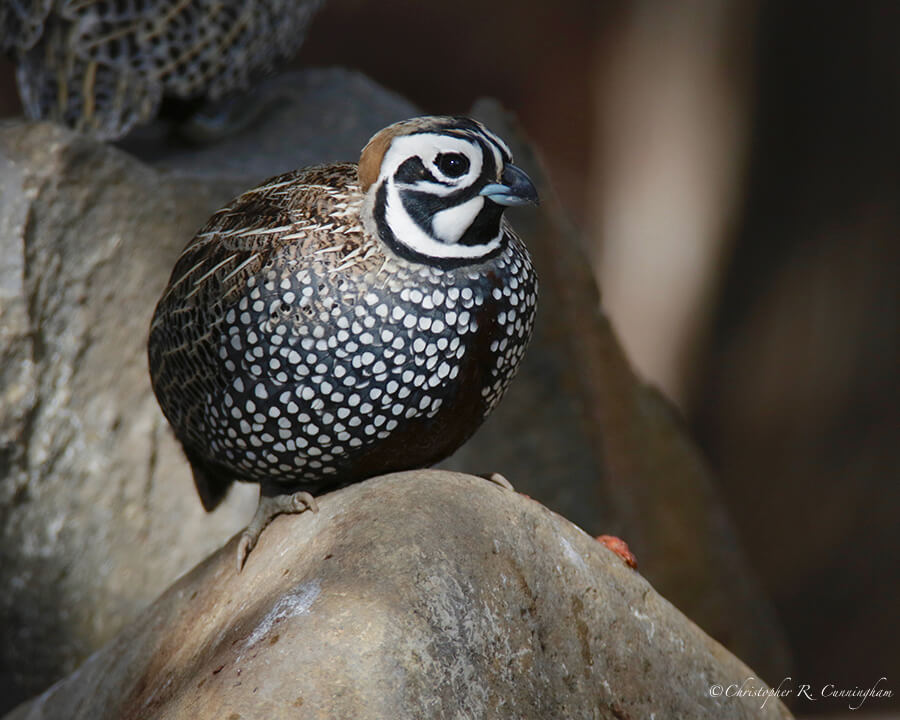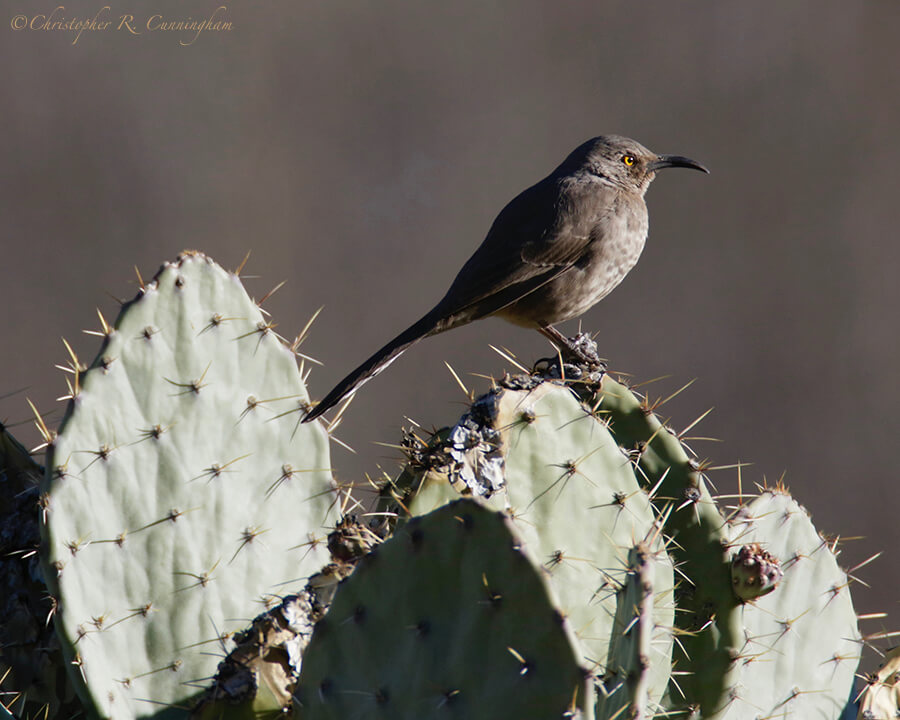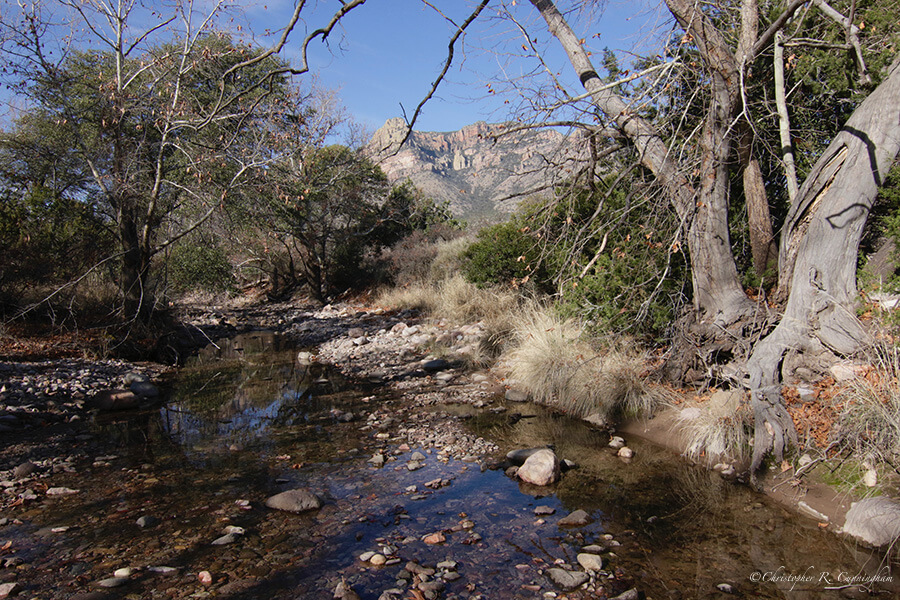Fire is the test of gold; adversity, of strong men. –Martha Graham

For this spring break, we took an epic road trip across West Texas, New Mexico, and southeast Arizona. It was the kind of road trip that produces exhaustion that hurts. But we were able to spend time in two major habitat types in the Cave Creek Canyon area, the Chihuahuan Desert at the mouth of the canyon and low elevation (less than 5500 feet) riparian areas adjacent to the creek.
The open desert areas are dominated by prickly pear, agave, and scattered grasses. Birds spotted here included Verdin, Pyrrhuloxia, Gambel’s Quail, White-crowned and Lincoln’s Sparrow, Curve-billed Thrasher, House Finch, Ladder-backed Woodpecker, and Northern Flicker (Red-shafted). Here, we hoped for shots of birds perched on the cacti and century bloom stalks . . . .

The riparian habitat at low elevation is dominated by juniper, deciduous hardwoods, and grasses. Junipers are the most flammable trees in the canyon and likely have, in places, achieved unnatural densities due to decades of fire suppression.
But upon closer inspection, tangles of dead or crowded juniper contain a greater wealth of lovely (and more fire-resistant) deciduous trees than is first evident–Arizona sycamore, Arizona walnut, and oak. The recent wildfires in California have aroused fears of the same in Cave Creek Canyon. Some have even started taking action to clear out the dead and low vegetation that could act as fuel for major wildfires. More as the story develops . . . .

©2018 Christopher R. Cunningham. All rights reserved. No text or images may be duplicated or distributed without permission.